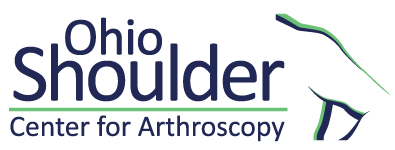The rotator cuff consists of a group of four muscles that reside deep in the shoulder area beneath the bulkier upper arm muscle called the deltoid. The four muscles termed the subscapularis, supraspinatus, infraspinatus, and teres minor attach to the top portion of the arm bone called the humerus.
Common Conditions

01 Rotator Cuff Disorders
02 Rotator Cuff Tear
The management of rotator cuff tearing is individualized to each patient base on the patient’s current symptoms and future goals. Studies have shown that many patients can achieve satisfactory results and improved shoulder function without surgery even in cases in which the rotator cuff has a full thickness tear.


03 Labrum
The glenoid labrum is a rubbery fibrocartilage ring that encircles the socket of the shoulder and provides increased depth and stability to the shoulder joint. Labrum disorders generally come in two forms, those related to the wear and tear effects of normal shoulder use and aging, and those that occur as a result of acute injury.
04 SLAP Tears
Superior labrum anterior and posterior (SLAP) tears are injuries that occur to the labrum at its upper most aspect near the attachment of the biceps tendon. SLAP tears generally occur from chronic overuse and in particular overhead activity and are common in the middle aged and older population. Surgery is often unnecessary in these cases.


05 Instability
Shoulder instability refers to a condition where the humeral head, or ball, does not maintain adequate contact with the socket of the shoulder. This can occur after an acute traumatic dislocation as the labrum and the ligaments that link the ball and socket are torn. Some patients may avoid recurrent dislocation if the ligaments and labrum heal adequately.
06 Biceps Tendon
The biceps tendon is a long cord-like structure that represents the uppermost extension of the long head of the biceps muscle. It rests in a groove at the top of the arm bone (humerus) and is situated between the subscapularis and supraspinatus tendons of the rotator cuff and ultimately attaches to a structure inside the shoulder called the labrum.


07 Frozen Shoulder
Frozen shoulder refers to a condition where the shoulder undergoes a process of painful stiffening leading to substantial loss of shoulder function. The term adhesive capsulitis is also used to describe this condition. Primary adhesive capsulitis involves the spontaneous development of a stiff shoulder in the absence of an identifiable injury or surgery.
08 Bursitis
Shoulder bursitis refers to inflammation of one of the multiple bursae that reside about the shoulder. A layer or bursa material often referred to as a sac helps to minimize direct contact and friction as muscle and tendon come into close contact with bony structures. In the shoulder this most often involves the subacromial and subdeltoid bursae which can become inflamed as the space between the upper arm (humerus) and the corner of the shoulder blade (acromion) closes down with elevation and some rotation of the arm.


09 Impingement Syndrome
Impingement syndrome refers to a condition where elevation and rotation of the arm brings the rotator cuff into close contact with the corner of the shoulder blade called the acromion. The acromion creates a roof of sorts above the rotator cuff and the space beneath the acromion, referred to as the subacromial space, is quite limited.
10 Tendinosis / Tendinitis
Many of the problems that occur around the shoulder involved long term damage to the surrounding tendons in the area. Tendons are connective tissue structures that attach muscle to bone and allow the muscles to exert their effect on the skeleton. Most tendon problems occur as a result of aging and normal use though acute injuries can certainly lead to further damage.


11 Shoulder Dislocation
Shoulder dislocation refers to a condition where the humeral head, or ball, loses contact with the socket of the shoulder. This typically occurs after an acute traumatic injury such as a fall on on outstretched arm where the labrum and the ligaments that link the ball and socket can be torn. A scenario where the ball partially slides off the socket is termed a subluxation.
12 Shoulder Separation
A shoulder separation occurs when the ligaments that connect the end of the collarbone (clavicle) to the corner of the shoulder blade (acromion) are injured. Depending on the degree of damage to the ligaments the clavicle may show no outward sign of deformity or may become displaced and appear raised relative to the acromion.


13 Scapular Dyskinesis
The shoulder blade, or scapula, plays a critical role in the maintenance of normal shoulder function. The scapula contains the glenoid which is the socket of the shoulder joint so proper positioning and stability of the scapula will have implications on shoulder and arm movement.
14 Arthritis
Arthritis describes a condition where the cartilage that covers the ends of bones where they form a joint deteriorates, affecting joint function. In the shoulder this can occur in the ball and socket joint (glenohumeral joint) or the joint where the collarbone meets the corner of the shoulder blade (acromioclavicular joint).

